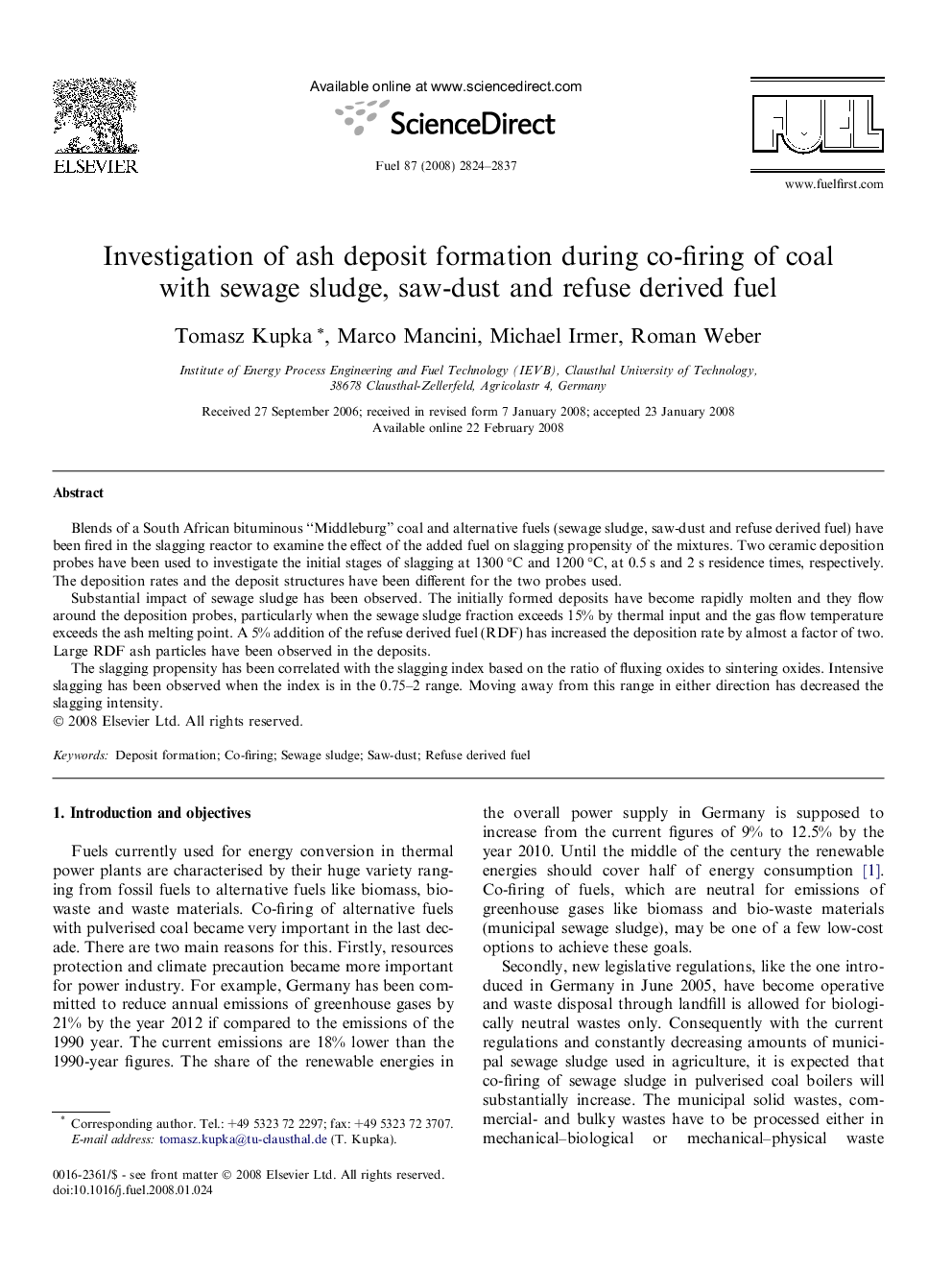| Article ID | Journal | Published Year | Pages | File Type |
|---|---|---|---|---|
| 207485 | Fuel | 2008 | 14 Pages |
Blends of a South African bituminous “Middleburg” coal and alternative fuels (sewage sludge, saw-dust and refuse derived fuel) have been fired in the slagging reactor to examine the effect of the added fuel on slagging propensity of the mixtures. Two ceramic deposition probes have been used to investigate the initial stages of slagging at 1300 °C and 1200 °C, at 0.5 s and 2 s residence times, respectively. The deposition rates and the deposit structures have been different for the two probes used.Substantial impact of sewage sludge has been observed. The initially formed deposits have become rapidly molten and they flow around the deposition probes, particularly when the sewage sludge fraction exceeds 15% by thermal input and the gas flow temperature exceeds the ash melting point. A 5% addition of the refuse derived fuel (RDF) has increased the deposition rate by almost a factor of two. Large RDF ash particles have been observed in the deposits.The slagging propensity has been correlated with the slagging index based on the ratio of fluxing oxides to sintering oxides. Intensive slagging has been observed when the index is in the 0.75–2 range. Moving away from this range in either direction has decreased the slagging intensity.
